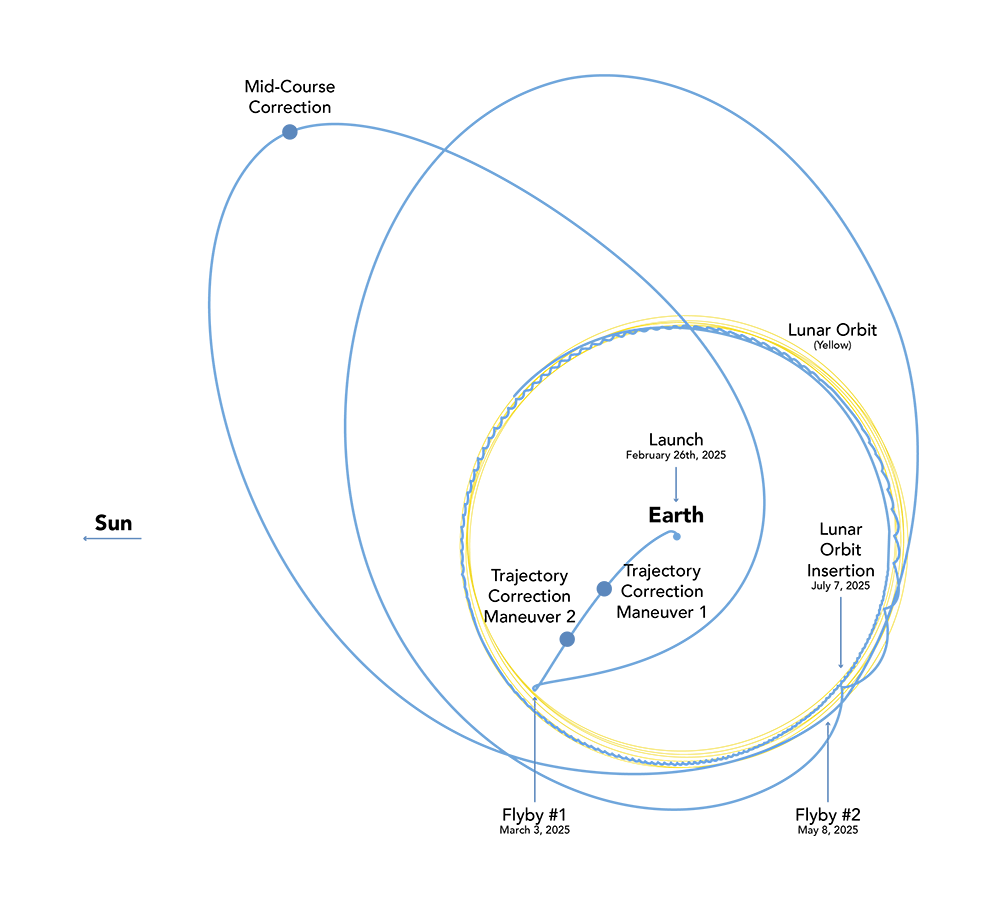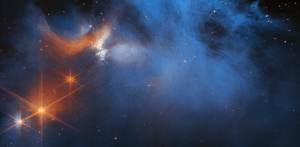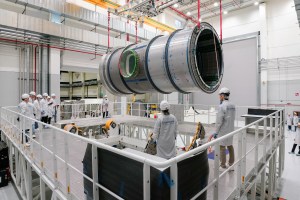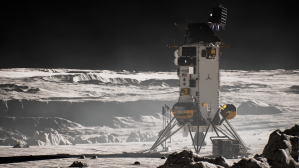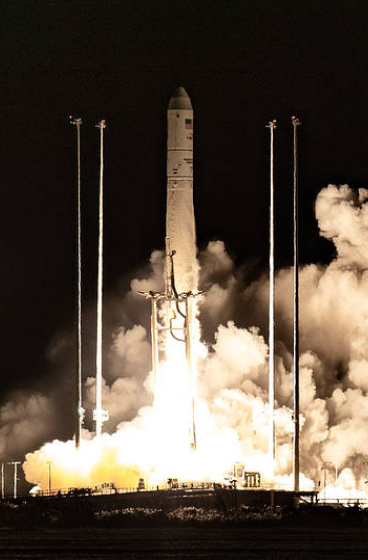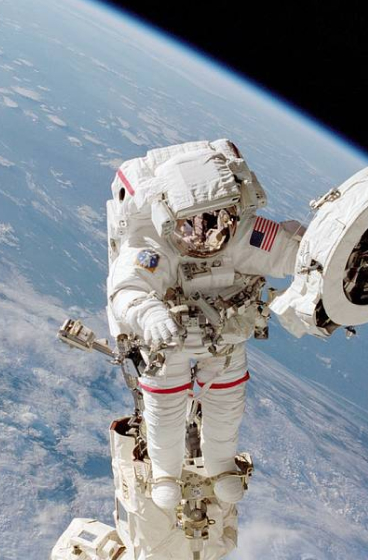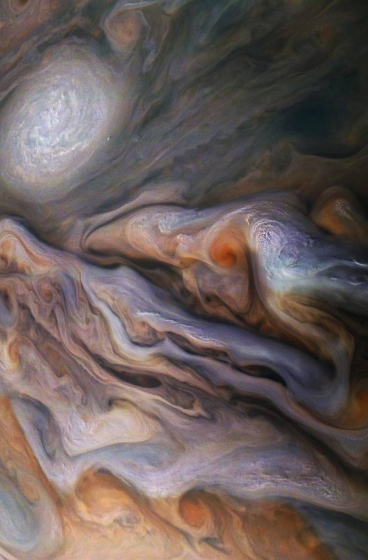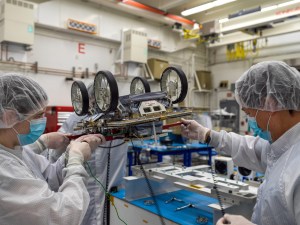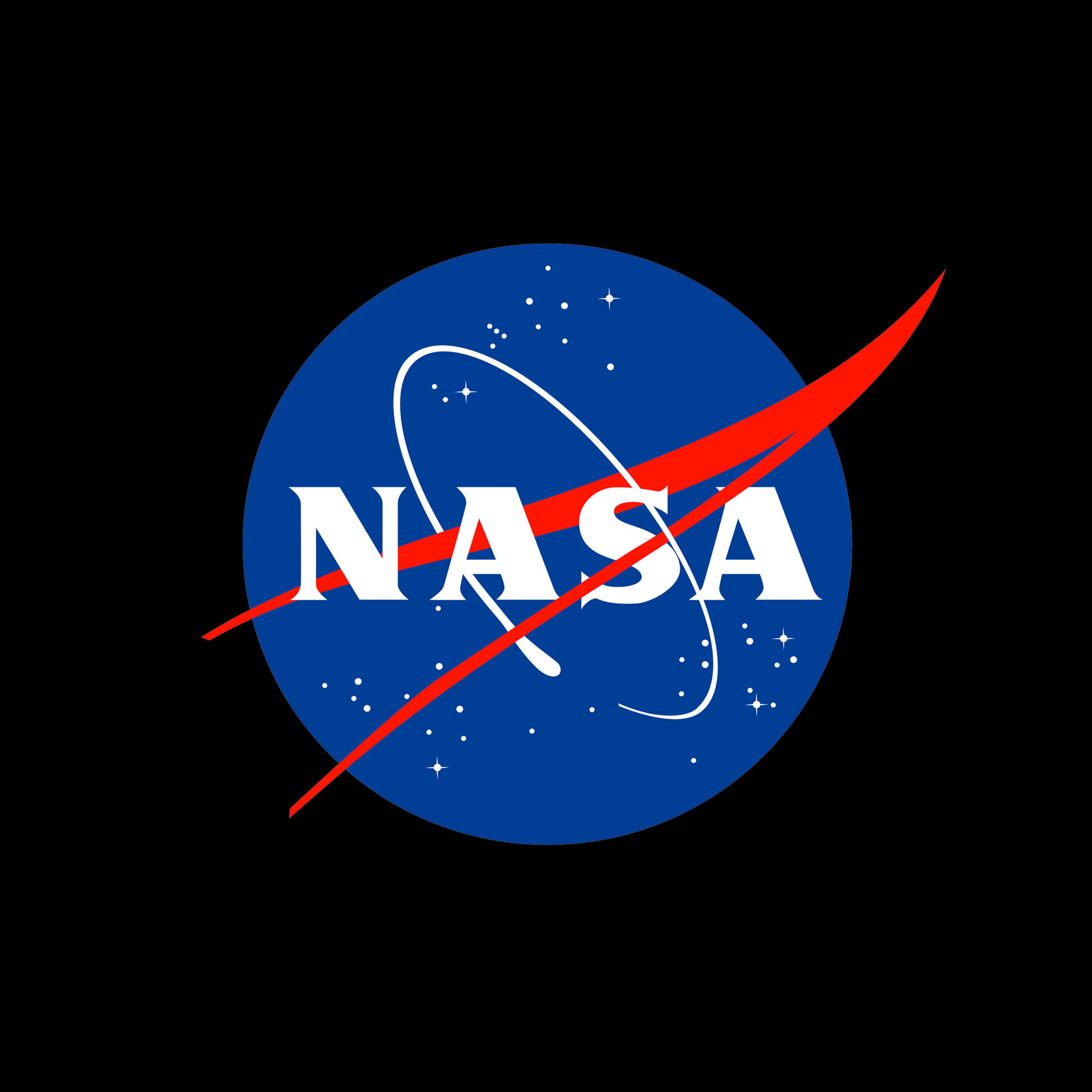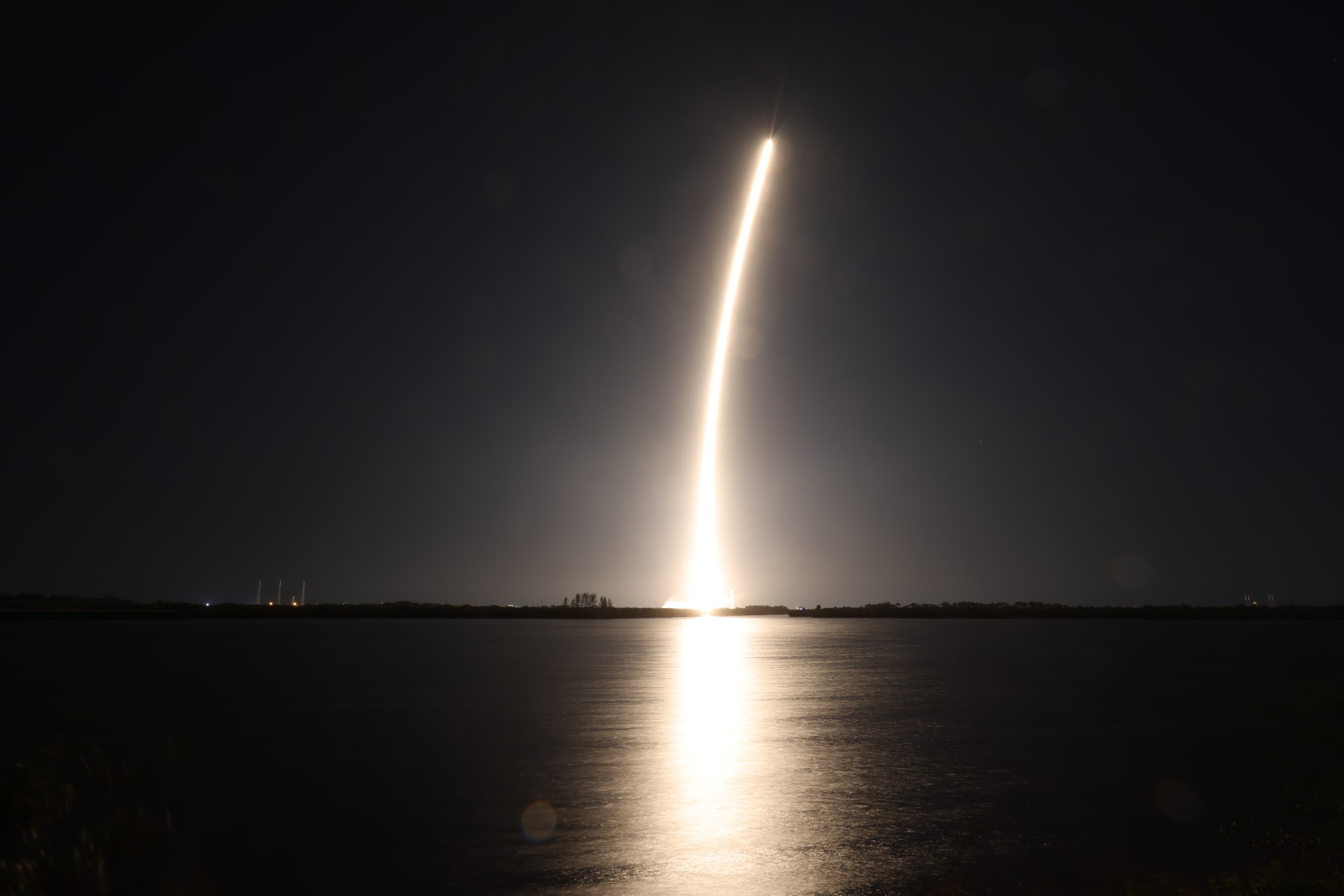How NASA’s Lunar Trailblazer Will Make a Looping Voyage to the Moon
6 min read
Preparations for Next Moonwalk Simulations Underway (and Underwater)
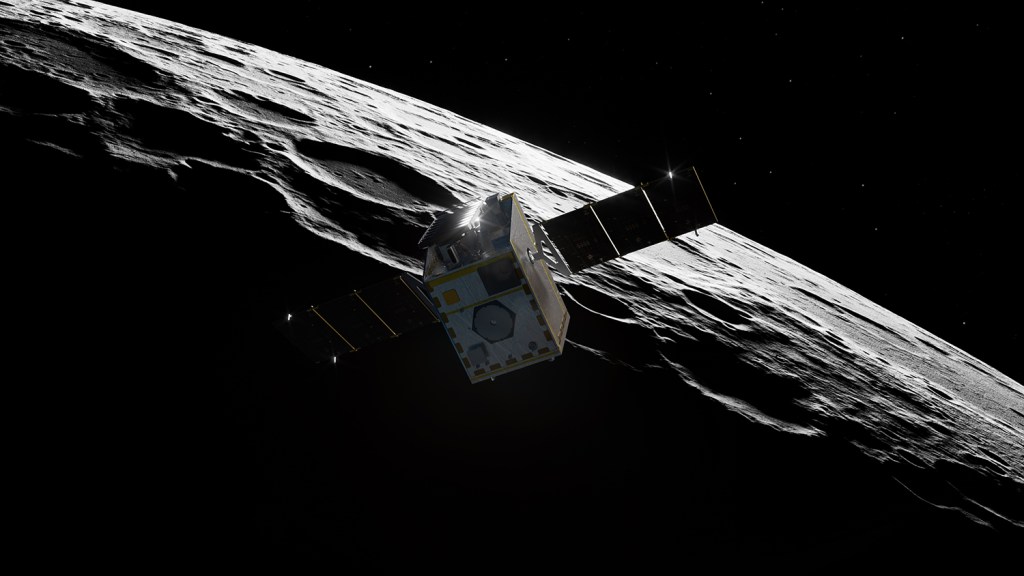
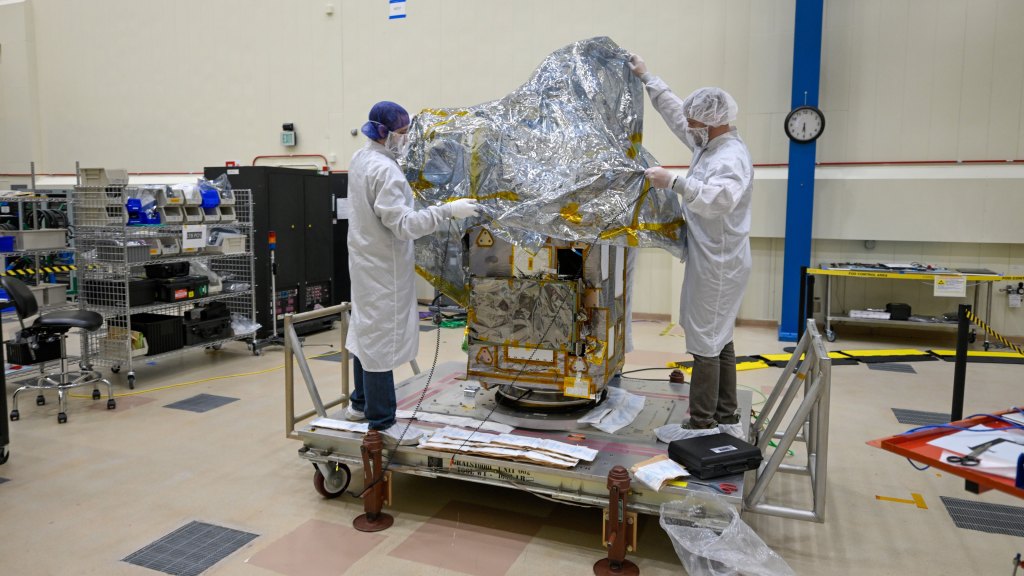
Before arriving at the Moon, the small satellite mission will use the gravity of the Sun, Earth, and Moon over several months to gradually line up for capture into lunar orbit.
NASA’s Lunar Trailblazer arrived in Florida recently in advance of its launch later this month and has been integrated with a SpaceX Falcon 9 rocket. Shipped from Lockheed Martin Space in Littleton, Colorado, the small satellite is riding along on Intuitive Machines’ IM-2 launch — part of NASA’s CLPS (Commercial Lunar Payload Services) initiative — which is slated for no earlier than Thursday, Feb. 26, from Launch Complex 39A at the agency’s Kennedy Space Center.
Approximately 48 minutes after launch, Lunar Trailblazer will separate from the rocket and begin its independent flight to the Moon. The small satellite will discover where the Moon’s water is, what form it is in, and how it changes over time, producing the best-yet maps of water on the lunar surface. Observations gathered during its two-year prime mission will contribute to the understanding of water cycles on airless bodies throughout the solar system while also supporting future human and robotic missions to the Moon by identifying where water is located.
Key to achieving these goals are the spacecraft’s two state-of-the-art science instruments: the High-resolution Volatiles and Minerals Moon Mapper (HVM3) infrared spectrometer and the Lunar Thermal Mapper (LTM) infrared multispectral imager. The HVM3 instrument was provided by NASA’s Jet Propulsion Laboratory in Southern California and LTM was built by the University of Oxford and funded by the UK Space Agency.
“The small team is international in scope, which is more typical of larger projects,” said Andy Klesh, Lunar Trailblazer’s project systems engineer at JPL. “And unlike the norm for small missions that may only have a very focused, singular purpose, Lunar Trailblazer has two high-fidelity instruments onboard. We are really punching above our weight.”
Intricate Navigation
Before it can use these instruments to collect science data, Lunar Trailblazer will for several months perform a series of Moon flybys, thruster bursts, and looping orbits. These highly choreographed maneuvers will eventually position the spacecraft so it can map the surface in great detail.
Weighing only 440 pounds (200 kilograms) and measuring 11.5 feet (3.5 meters) wide when its solar panels are fully deployed, Lunar Trailblazer is about the size of a dishwasher and has a relatively small engine. To make its four-to-seven-month trip to the Moon (depending on the launch date) as efficient as possible, the mission’s design and navigation team has planned a trajectory that will use the gravity of the Sun, Earth, and Moon to guide the spacecraft — a technique called low-energy transfer.
“The initial boost provided by the rocket will send the spacecraft past the Moon and into deep space, and its trajectory will then be naturally reshaped by gravity after several lunar flybys and loops around Earth. This will allow it to be captured into lunar orbit with minimal propulsion needs,” said Gregory Lantoine, Lunar Trailblazer’s mission design and navigation lead at JPL. “It’s the most fuel-efficient way to get to where we need to go.”
As it flies past the Moon several times, the spacecraft will use small thruster bursts — aka trajectory correction maneuvers — to slowly change its orbit from highly elliptical to circular, bringing the satellite down to an altitude of about 60 miles (100 kilometers) above the Moon’s surface.
Arriving at the Moon
Once in its science orbit, Lunar Trailblazer will glide over the Moon’s surface, making 12 orbits a day and observing the surface at a variety of different times of day over the course of the mission. The satellite will also be perfectly placed to peer into the permanently shadowed craters at the Moon’s South Pole, which harbor cold traps that never see direct sunlight. If Lunar Trailblazer finds significant quantities of ice at the base of the craters, those locations could be pinpointed as a resource for future lunar explorers.
The data the mission collects will be transmitted to NASA’s Deep Space Network and delivered to Lunar Trailblazer’s new operations center at Caltech’s IPAC in Pasadena, California. Working alongside the mission’s experienced team will be students from Caltech and nearby Pasadena City College who are involved in all aspects of the mission, from operations and communications to developing software.
Lunar Trailblazer was a selection of NASA’s SIMPLEx (Small Innovative Missions for Planetary Exploration), which provides opportunities for low-cost science spacecraft to ride-share with selected primary missions. To maintain the lower overall cost, SIMPLEx missions have a higher risk posture and lighter requirements for oversight and management. This higher risk acceptance allows NASA to test pioneering technologies, and the definition of success for these missions includes the lessons learned from more experimental endeavors.
“We are a small mission with groundbreaking science goals, so we will succeed by embracing the flexibility that’s built into our organization,” said Lee Bennett, Lunar Trailblazer operations lead with IPAC. “Our international team consists of seasoned engineers, science team members from several institutions, and local students who are being given the opportunity to work on a NASA mission for the first time.”
More About Lunar Trailblazer
Lunar Trailblazer is led by Principal Investigator Bethany Ehlmann of Caltech in Pasadena, California. Caltech also leads the mission’s science investigation and mission operations. This includes planning, scheduling, and sequencing of all science, instrument, and spacecraft activities during the nominal mission. Science data processing will be done in the Bruce Murray Laboratory for Planetary Visualization at Caltech. NASA’s Jet Propulsion Laboratory in Southern California manages Lunar Trailblazer and provides system engineering, mission assurance, the HVM3 instrument, and mission design and navigation. Lockheed Martin Space provides the spacecraft, integrates the flight system, and supports operations under contract with Caltech. University of Oxford developed and provided the LTM instrument. Part of NASA’s Lunar Discovery Exploration Program, the mission is managed by NASA’s Planetary Mission Program Office at Marshall Space Flight Center in Huntsville, Alabama, for the agency’s Science Mission Directorate in Washington.
For more information about Lunar Trailblazer, visit:
https://www.jpl.nasa.gov/missions/lunar-trailblazer
News Media Contacts
Karen Fox / Molly Wasser
NASA Headquarters, Washington
202-358-1600
karen.c.fox@nasa.gov / molly.l.wasser@nasa.gov
Ian J. O’Neill
Jet Propulsion Laboratory, Pasadena, Calif.
818-354-2649
ian.j.oneill@jpl.nasa.gov
Isabel Swafford
Caltech IPAC
626-216-4257
iswafford@ipac.caltech.edu
2025-021
